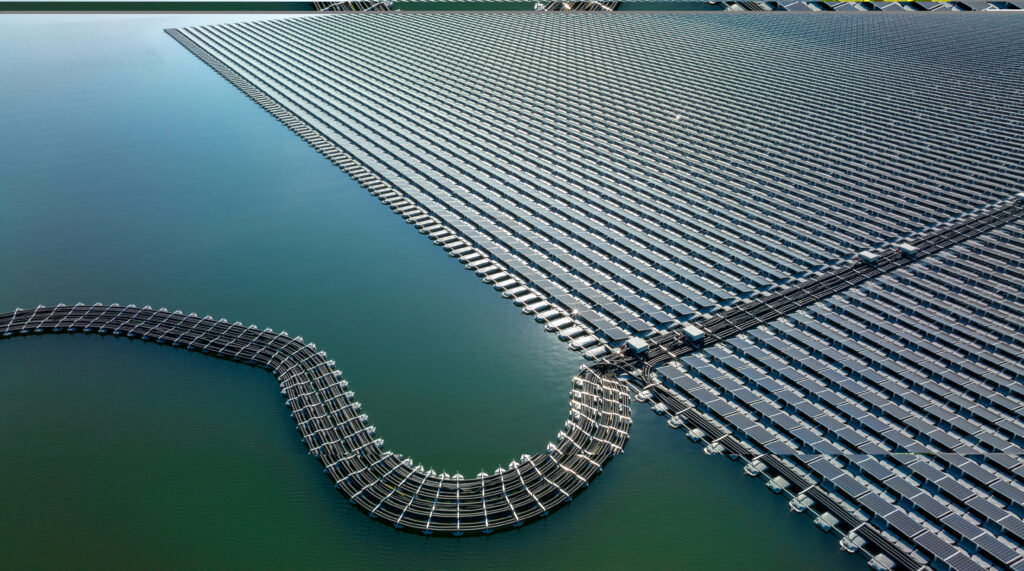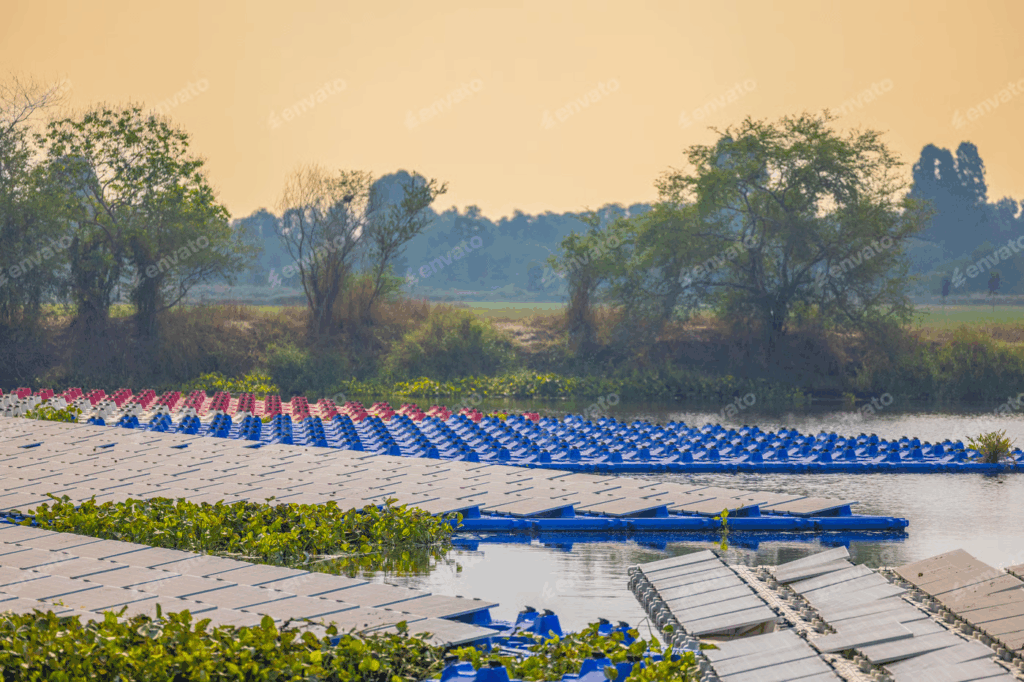A ground-breaking energy solution is gaining momentum globally, with China leading the charge in floating solar panel technology. At Shamrock Energy Group, we are eager to explore how this innovative approach can reshape energy access across Sub-Saharan Africa, where 600 million people, 43% of the region’s population, still lack electricity. With our expertise in engineering, procurement, and construction (EPC), we see China’s floating solar panels as a promising avenue to address these challenges, blending opportunity with thoughtful consideration.

The Emergence of China’s Floating Solar Innovation
China has pioneered floating photovoltaic (FPV) systems, utilizing its extensive water bodies to generate clean energy. A standout achievement is the 1 GW offshore solar farm in Shandong Province, completed in November 2024, covering 1,223 hectares and powering over 15,000 homes. This project highlights the advantage of water cooling, which can boost efficiency by 10-15% compared to land-based panels. Other notable efforts include the 40 MW Huainan plant on a former coal mine site (2017) and the 400 MW Laizhou Bay project (2024), showcasing China’s ability to repurpose difficult landscapes. Backed by a $400 billion investment in clean energy, China dominates 80% of global PV manufacturing. The technology’s benefits, minimal land use and reduced water loss make it an appealing model, particularly for regions with limited space and resources.
Impact in Africa: A Growing Influence
While China’s floating solar electricity primarily serves its own grid, its technology and investment are beginning to influence Africa. The continent’s hydropower reservoirs provide a natural platform for FPV systems. Studies suggest that equipping just 1% of these reservoirs with floating panels could double hydropower capacity and increase electricity generation by 50%, adding approximately 52.9 TWh annually.
A key example is Ghana’s 5 MW floating solar plant at the Bui Dam, the largest in Africa, which draws on Chinese expertise to produce clean energy while preserving land. Similarly, China Energy Engineering Corp’s proposed 1,000 MW floating solar farm on Zimbabwe’s Kariba Dam, with a $987 million investment, aims to address a 1,700 MW deficit. If completed, it could power industrial areas and stabilize the grid, inspiring further adoption.
China’s broader involvement includes the Africa Solar Belt Program, launched at the 2024 Forum on China-Africa Cooperation (FOCAC), focusing on small-scale, community-led projects. Since 2000, China has invested over $13 billion in African clean energy, including the 55 MW Garissa Solar Plant in Kenya, which generates 100,000 MWh yearly for 350,000 people. While these are land-based, the know-how could extend to FPV as China shifts from coal investments.

Opportunities for Africa
At Shamrock Energy Group, we see vast potential for floating solar to bridge Africa’s energy gap. This technology could energize 30% of rural areas by 2030, creating 1.2 million jobs in installation and upkeep. By shading reservoirs, FPV reduces evaporation, a critical issue in drought-prone regions where 42 billion cubic meters were lost in 2016, potentially saving 743 million cubic meters annually. This dual benefit strengthens water security and energy supply, especially in arid nations.
Local fabrication of FPV components, a strength we bring through our EPC experience, could lower import costs by 40%. Our work with pump and pipeline systems equips us to design sturdy platforms and supports suited to Africa’s varied conditions. We suggest establishing regional hubs to produce these systems, reducing the 35% of project delays tied to infrastructure shortages and fostering self-reliance.
Challenges to Address
Despite the promise, hurdles remain. Africa’s inconsistent grids, impacting 35% of projects, and higher initial costs (20-25% more than ground-mounted systems) pose barriers to widespread use. Environmental concerns, such as effects on aquatic life, need careful study, and community acceptance requires active engagement.
Our Vision as Industry Leaders
We believe China’s floating solar technology can light up Africa’s path forward, but success hinges on partnership. We advocate for public-private collaborations to close the $25 billion financing gap needed for 70 GW of solar capacity by 2030. By combining FPV with existing hydropower, we can reduce outages by 10% and enhance grid stability. We also recommend training programs to increase local skills by 15% each year. Our practical approach, rooted in hands-on fabrication, ensures we can deliver customized solutions, from platform designs to maintenance support.
China’s floating solar panels are not yet a direct electricity source for Africa, but their technology and investment are sparking local energy initiatives. With thoughtful planning, Africa can harness this innovation to power 300 million people by 2030, as outlined in initiatives like Mission 300. We are poised to lead this effort, turning sunlight and water into a sustainable legacy for the continent.
